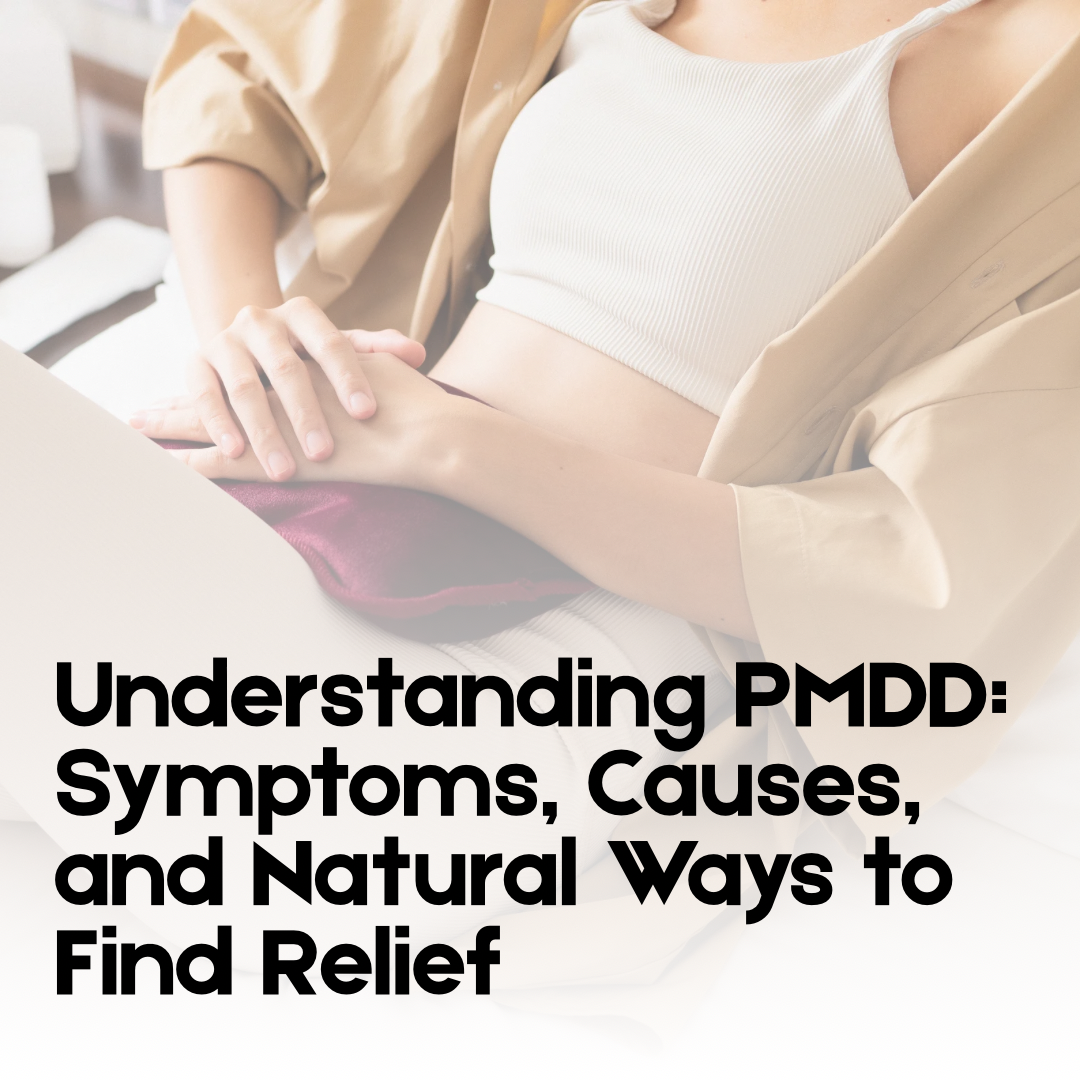What is PMDD?
Premenstrual Dysphoric Disorder (PMDD) is a severe form of PMS (premenstrual syndrome) that affects around 5–8% of menstruating women. Unlike typical PMS, PMDD symptoms can be debilitating, impacting daily life, relationships, and mental health.
According to the National Institutes of Health, PMDD is classified as a health condition that requires both lifestyle management and, in some cases, medical treatment.
Common Symptoms of PMDD
PMDD typically appears 7–10 days before menstruation and resolves a few days after the period begins. Symptoms include:
- Severe mood swings or irritability
- Anxiety or depression
- Trouble sleeping (insomnia or hypersomnia)
- Fatigue and low energy
- Difficulty concentrating
- Bloating and cramping
- Breast tenderness
- Joint or muscle pain
- Food cravings or changes in appetite
If these symptoms disrupt work, school, or relationships, it may be PMDD rather than regular PMS.
What Causes PMDD?
The exact cause isn’t fully understood, but researchers believe PMDD is linked to:
- Hormonal fluctuations during the menstrual cycle
- Sensitivity to serotonin changes in the brain
- Genetic predisposition (family history of depression or mood disorders)
For a deeper dive, see Mayo Clinic’s overview of PMDD.
Natural Ways to Help Manage PMDD
While some women require medication, many find relief with lifestyle and dietary adjustments.
1. Nutrition and Diet
- Increase magnesium & calcium – Found in leafy greens, almonds, yogurt. Studies suggest they may reduce bloating and mood symptoms.
- Balance protein and complex carbs – Helps stabilize blood sugar and reduce fatigue.
- Limit caffeine, sugar, and alcohol – These can worsen anxiety, bloating, and mood swings.
💡 Resource: Harvard T.H. Chan School of Public Health on nutrition
2. Exercise and Movement
- Aim for 30 minutes of moderate activity most days (walking, strength training, yoga).
- Exercise boosts endorphins, which can improve mood and reduce pain.
3. Stress Management
- Mindfulness & meditation – Even 10 minutes a day can help regulate emotions.
- Breathing exercises & journaling – Useful for coping with mood swings.
- Adequate sleep – Aim for 7–9 hours per night.
4. Supplements That May Help
- Omega-3 fatty acids (found in salmon or supplements) may reduce depression symptoms.
- Vitamin B6 has been linked to mood regulation.
- Always consult a healthcare provider before starting supplements.
Medical Treatment Options
If lifestyle changes aren’t enough, doctors may recommend:
- SSRIs (Selective Serotonin Reuptake Inhibitors) – Shown to reduce PMDD symptoms.
- Hormonal birth control – Can help regulate hormone fluctuations.
- Cognitive Behavioral Therapy (CBT) – Useful for managing anxiety and depression.
For details on treatment, check out Johns Hopkins Medicine’s guide on PMDD.
Living with PMDD
PMDD can feel isolating, but support groups and community can make a difference. Connecting with others going through the same struggle provides emotional relief and helpful coping strategies.
✨ Tip: Track your symptoms with a period app (like Clue or Flo) to identify patterns and share them with your doctor.
Final Thoughts
PMDD is more than “bad PMS.” It’s a serious condition that requires understanding, treatment, and self-care strategies. Through a mix of diet, exercise, stress management, and—if needed—medical care, many women find relief and regain control over their cycles and daily lives.
👉 If you suspect you have PMDD, talk to your healthcare provider. Early diagnosis and treatment can help improve quality of life.
This article is for educational purposes only and should not replace professional medical advice.
Read more

Struggling with Hashimoto’s fatigue? Learn which foods can support thyroid health, reduce inflammation, and help boost energy naturally.

Learn how diet impacts PCOS symptoms like insulin resistance, weight gain, and fatigue. Explore nutrition tips, foods to eat, and foods to avoid.

